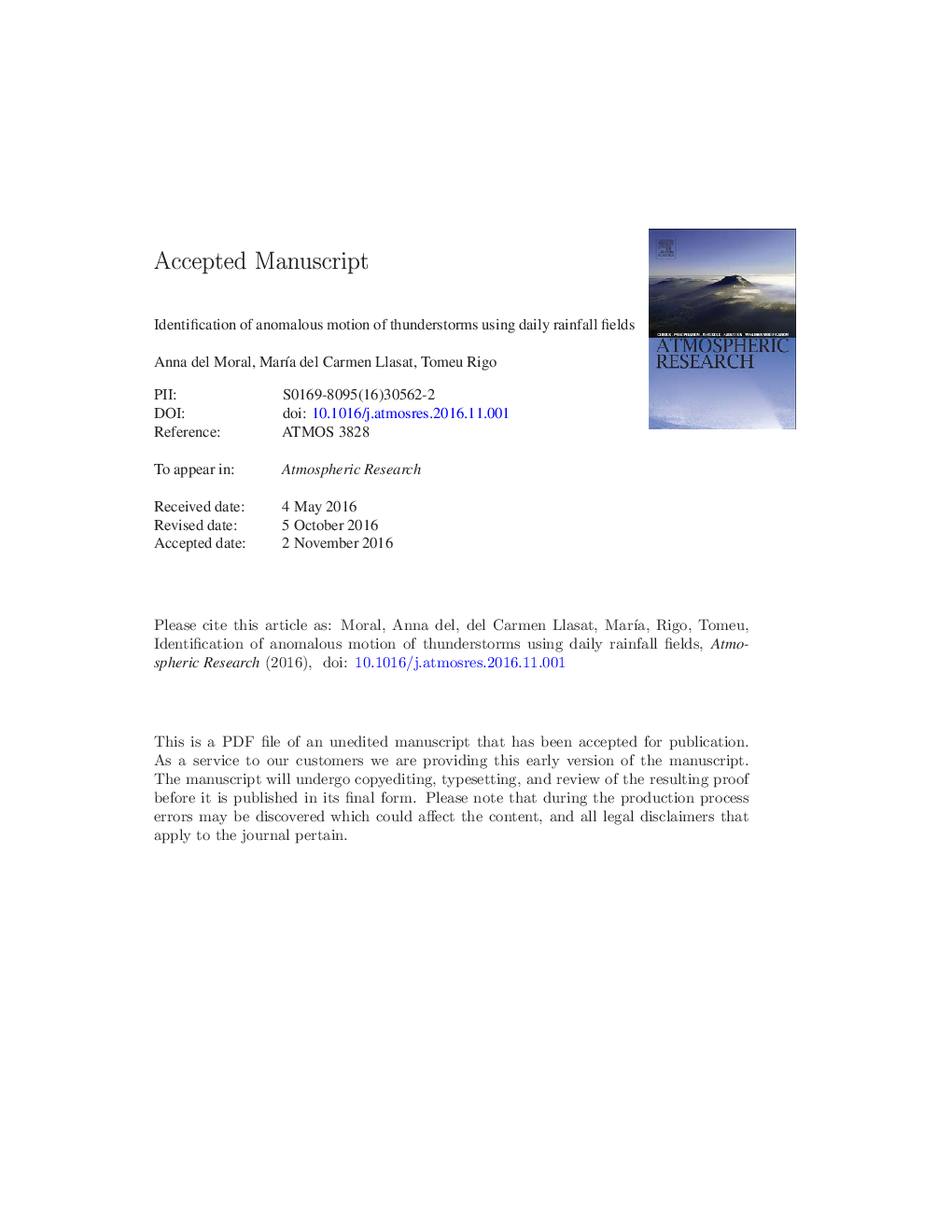| Article ID | Journal | Published Year | Pages | File Type |
|---|---|---|---|---|
| 5753697 | Atmospheric Research | 2017 | 27 Pages |
Abstract
Most of the adverse weather phenomena in Catalonia (northeast Iberian Peninsula) are caused by convective events, which can produce heavy rains, large hailstones, strong winds, lightning and/or tornadoes. These thunderstorms usually have marked paths. However, their trajectories can vary sharply at any given time, completely changing direction from the path they have previously followed. Furthermore, some thunderstorms split or merge with each other, creating new formations with different behaviour. In order to identify the potentially anomalous movements that some thunderstorms make, this paper presents a two-step methodology using a database with 8 years of daily rainfall fields data for the Catalonia region (2008-2015). First, it classifies daily rainfall fields between days with “no rain”, “non-potentially convective rain” and “potentially convective rain”, based on daily accumulated precipitation and extension thresholds. Second, it categorises convective structures within rainfall fields and briefly identifies their main features, distinguishing whether there were any anomalous thunderstorm movements in each case. This methodology has been applied to the 2008-2015 period, and the main climatic features of convective and non-convective days were obtained. The methodology can be exported to other regions that do not have the necessary radar-based algorithms to detect convective cells, but where there is a good rain gauge network in place.
Keywords
Related Topics
Physical Sciences and Engineering
Earth and Planetary Sciences
Atmospheric Science
Authors
Anna del Moral, MarÃa del Carmen Llasat, Tomeu Rigo,
